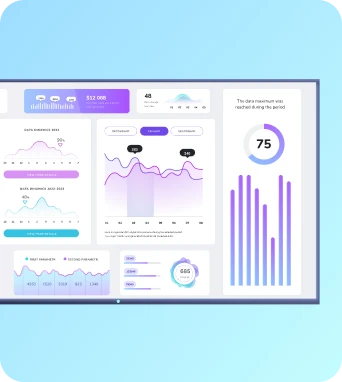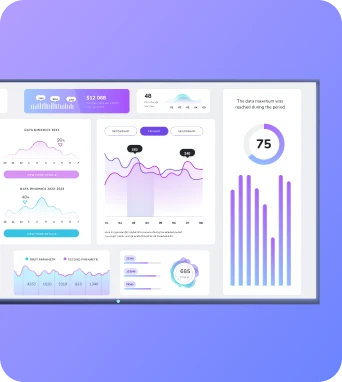So your business is growing — congratulations! But we both know more growth means more systems, more resources, and more tickets to deal with. 🙃
The question is, do you go with ITSM to help manage your tech right now, or scale up to an ESM solution to cover more business-centric use cases as you grow?
To pare down to the option that fits your team’s needs (and budget) best, you can use this guide to make an informed decision.
TL;DR: ITSM is like a toolbox for your IT department, while ESM is like a workshop for your entire organization. The latter makes sense if you just need better IT service management, while the former works well for a wide variety of your organization’s operations.
Let’s break it down.
What is IT service management (ITSM)?
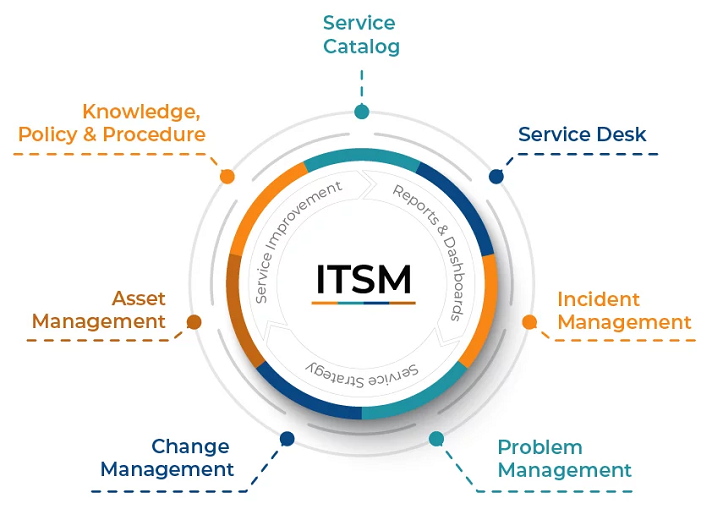
Historically, IT service management (ITSM) was a theoretical framework developed to help businesses decide how to manage IT services. An ITSM platform is a tool that helps deliver these services, enabling IT to meet both your business needs and your customers' expectations.
Most ITSM platforms offer a similar set of features based on the ITSM framework and philosophy. Common ITSM processes (and platform services) include:
- Incident management: Finding, troubleshooting, and fixing unplanned problems with your technology services, like unexpected downtime.
- Change management: Helping teams adapt to new software or services, as well as emerging technologies, as needed.
- Knowledge management: Storing a comprehensive set of procedures for knowledge sharing in the organization (like how to give a user secure access, for example).
- Problem management: Finding solutions for customer problems (also known as tickets), which may or may not require multiple members of your IT department.
- Service management: Dealing with routine requests within your service catalog, such as access requests, automate requests, direct requests, and more.
To summarize, you can use an ITSM platform to help with efficient service delivery, solving IT service requests, and otherwise simplifying IT service management processes. No need to manage everything ad-hoc; your IT team can collaborate on tasks within a single portal.
Sidenote: ITSM primarily focuses on IT services, but its principles can be applied to other areas of your organization. This is what makes it a foundation for other tools like ESM, which we’ll cover later on in the guide.
ITSM pros and cons
TL;DR: ITSM can help you save time and money in the long run, but be advised it might be as scalable as other systems. It also can’t connect with other business verticals (at least, not as well as ESM).
Here’s a quick breakdown of the benefits and disadvantages:
Best ITSM tools
Here are a few options you might want to consider.
InvGate Service Desk: Best ITSM for self-service workflows
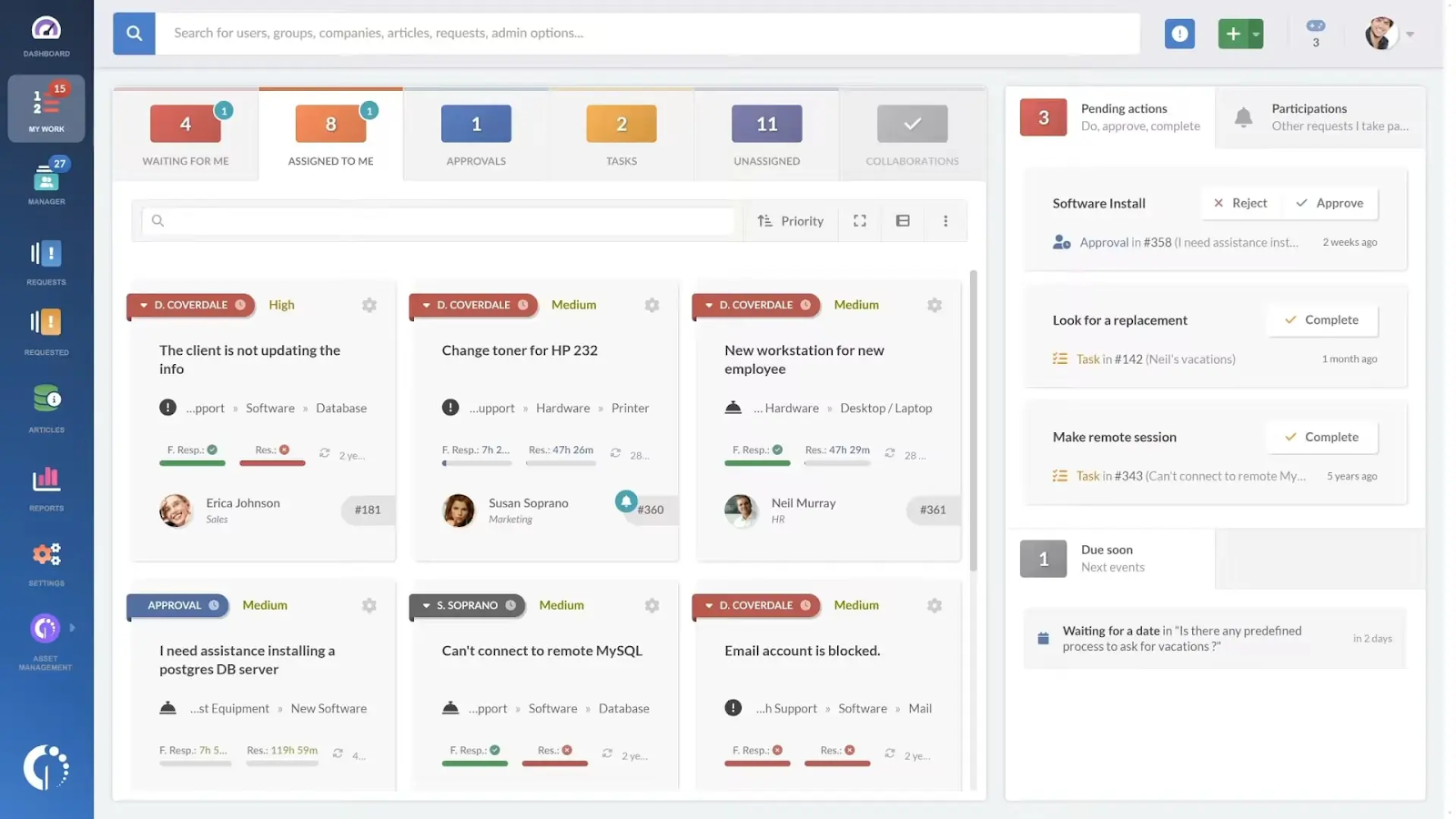
InvGate Service Desk is an ITSM program that can help internal users complete IT tasks on their own. If you want to spend less time manually fielding IT service management, just tap into InvGate’s customizable portals, self-service knowledge bases, and client-side tracking dashboards for ticket progress.
Pricing starts at $17 per agent per month for workflow automation, self-service service catalogs, and built-in reporting. It’s a solid choice for small to midsize businesses looking to maintain customer satisfaction — even if you’re fielding an increasing number of service requests, or if you want to free IT teams to focus on bigger fires.
HaloITSM: Best ITSM for incident management
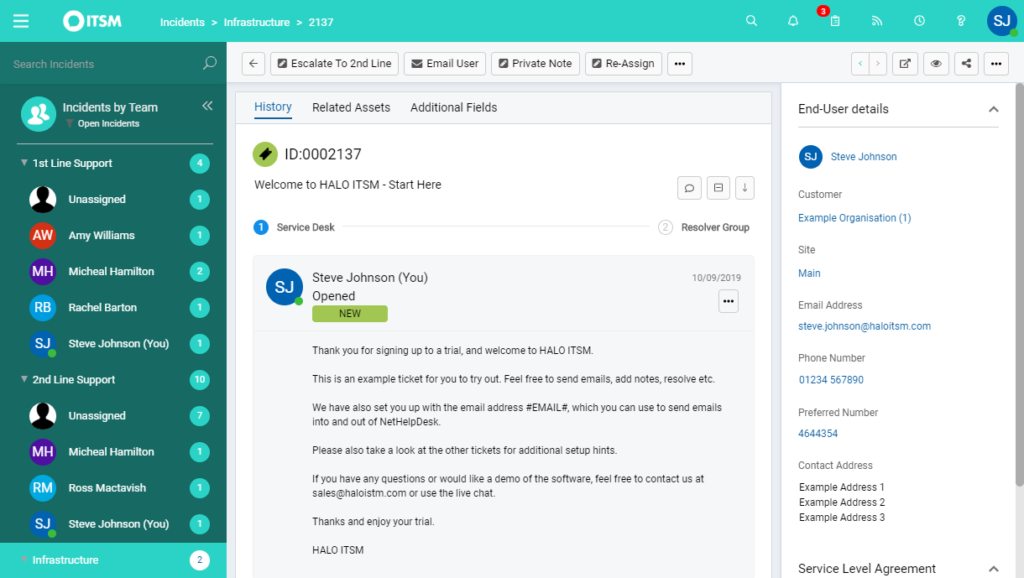
HaloITSM uses IT service management principles to help teams manage unplanned incidents. The platform can help you centralize alerts, auto-categorize issues, and escalate major issues so nothing slips through the cracks. It also supports ITIL-aligned workflows, which means you can standardize your incident response without reinventing the wheel.
You’ll need a custom quote for more accurate pricing, although online sources suggest somewhere between $49 and $79 per agent per month. This will let you access features like SLA tracking, asset management, and integrations with major IT monitoring tools.
Jira Service Management: Best ITSM for API access
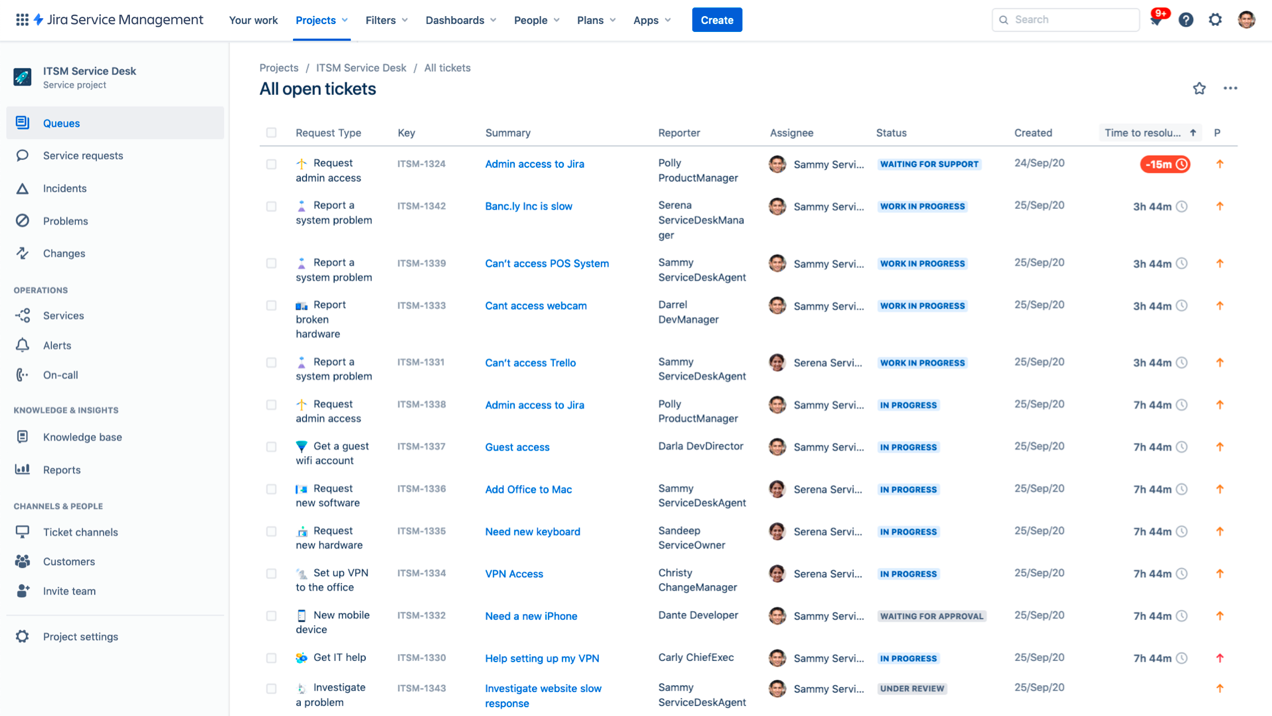
Want to create custom workflows on top of your ITSM? Jira Service Management might be a shoe-in for you. This is Atlassian’s answer to the ITSM marketplace and is globally recognized for its powerhouse API.
With Jira, you can hook the platform’s API directly into your CI/CD pipeline, customer portals, or custom-built apps — perfect if you’re building a tightly integrated tech stack. Plans start free for three agents or less, and scale up to $47.82 per agent per month for API documentation. Higher plans unlock tools like enterprise-grade identity and access management, 24/7 support, and unlimited automations.
Lansweeper: Best ITSM for third-party integrations
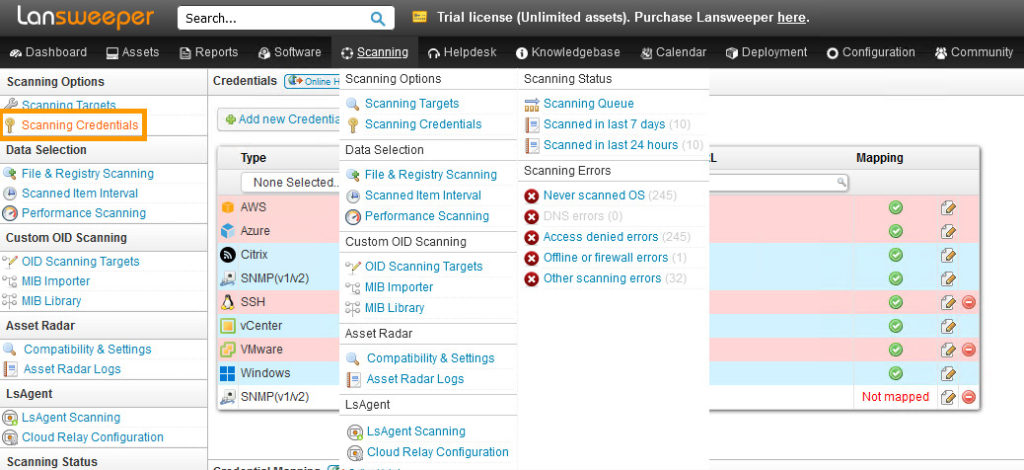
Lansweeper was built for discovery and asset management first, but its power really shines when you start plugging it into other platforms. This ITSM can link up with help desks, tie into patch management systems, or connect important data to BI tools (which you can display on digital signage screens with AI dashboards, by the way).
Lansweeper is free for the first 100 of your organization’s assets. Then, you’ll pay $219 per month for up to 2,000 assets plus access to the Service Desk Ticket Enrichment. You can upgrade as needed to unlock more robust reporting, integrations including ServiceNow and Jira, and flexible APIs for any service management practices.
If your team runs on a patchwork of tools, there’s a good chance Lansweeper will play nicely with all of them.
Zoho Desk: Best ITSM for CRM capabilities
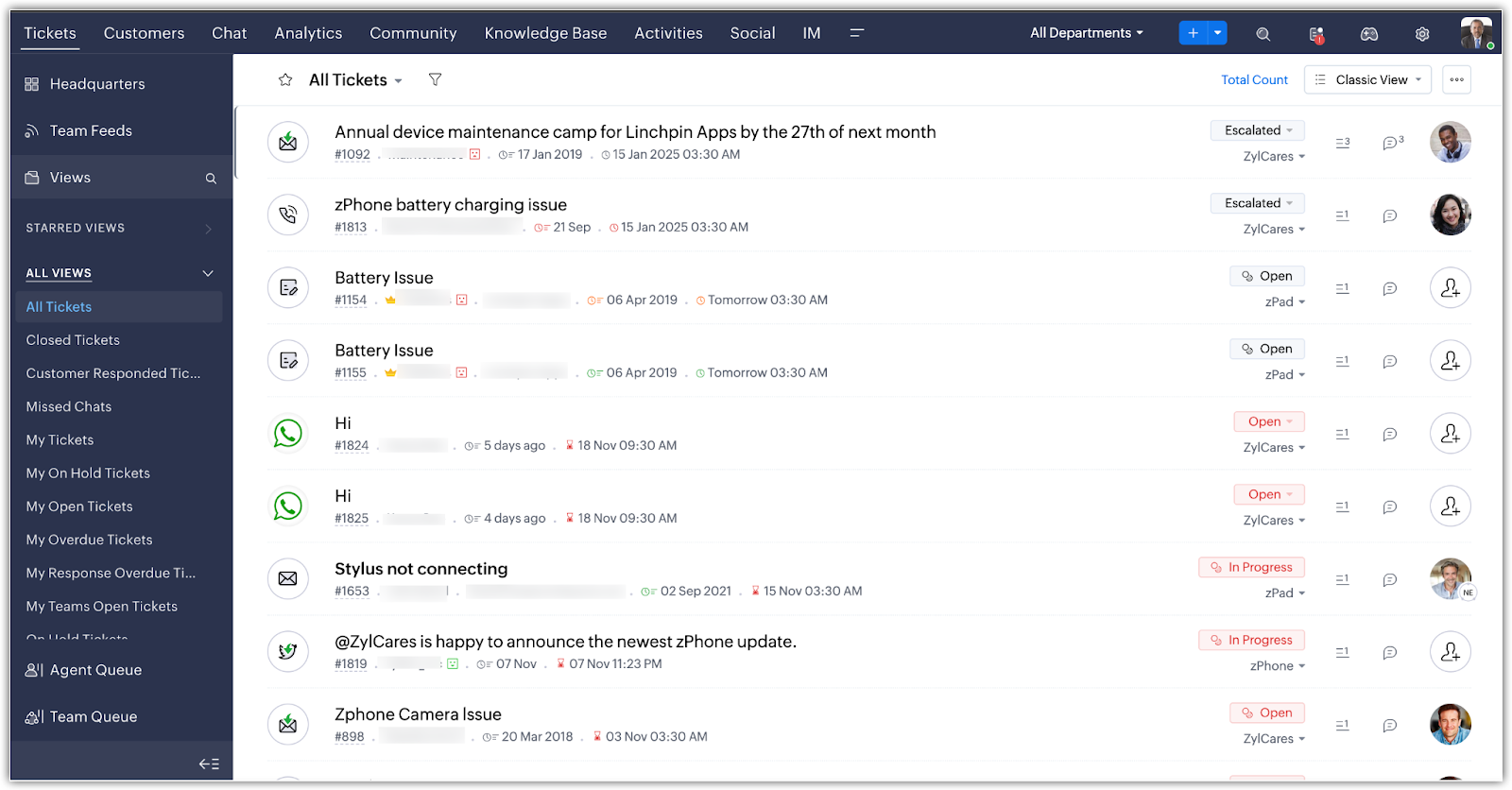
You might consider Zoho Desk if you’re looking for a traditional ITSM alongside customer relationship management (CRM). It’s officially classified as ‘Customer Service Help Desk Software,’ meaning it’s designed to help you collaborate on tickets within Zoho’s built-in CRM platform.
Prices start at $7 per user per month for ticket timelines, contact management, and the ability to streamline email, social media, and website-hosted contact forms. You can also upgrade to the most expensive plan ($40 per user per month) for phone access, skill-based assignments, and AI-powered Zia agents.
P.S., we wrote a guide covering 13 other CRMs if Zoho’s built-in CRM doesn’t suit your needs.
💡 Sidenote: if you want to compare and contrast other options, check out our write-up on essential features and benefits.
What is enterprise service management (ESM)?
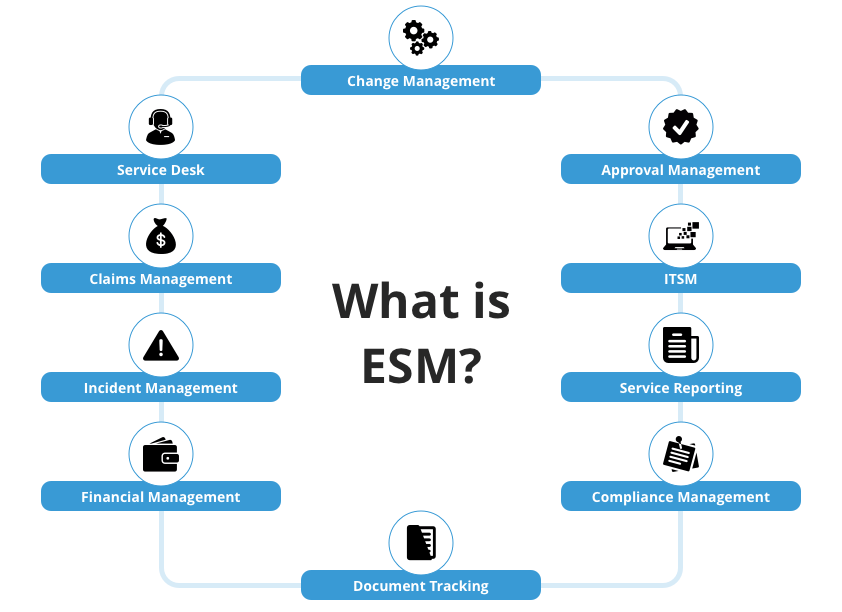
Enterprise service management (ESM) takes the same principles as IT service management (ITSM) and applies them to your entire organization — not just IT. That way, you can get the same structure and efficiency of your ITSM platform, now delivered across your entire enterprise.
You can implement ESM in non-IT services like:
- Facilities management: This can help you manage pressing work orders, keep tabs on preventative maintenance, and otherwise ensure better service delivery.
- Human resources (HR): Easily automate routine tasks and set up HR service catalogs so employees can self-service things like benefits selections and PTO.
- Finance: Quickly manage purchase requests, expense approvals, and/or vendor onboarding without dealing with manual spreadsheets.
- Legal: Track contract reviews, compliance requests, and documentation approvals in an organized workflow.
To summarize, an ESM platform captures the benefits of ITSM and applies them to multiple departments within your business. This makes it easier to scale your organization’s services, anticipate customer needs, and otherwise connect multiple departments to the same system.
ESM pros and cons
TL;DR: ESM platforms can help you connect multiple aspects of your business, which can help you better control objectives and business goals. But it’s not necessarily the best solution for IT-only businesses. And keep in mind the price tag may be higher than traditional ITSM tools.
Let’s take a closer look at the benefits and disadvantages:
Best ESM tools
If you’re looking for ESM tools to grow your business, one of the following might have what you’re looking for:
TeamDynamix: Best ESM for HR teams
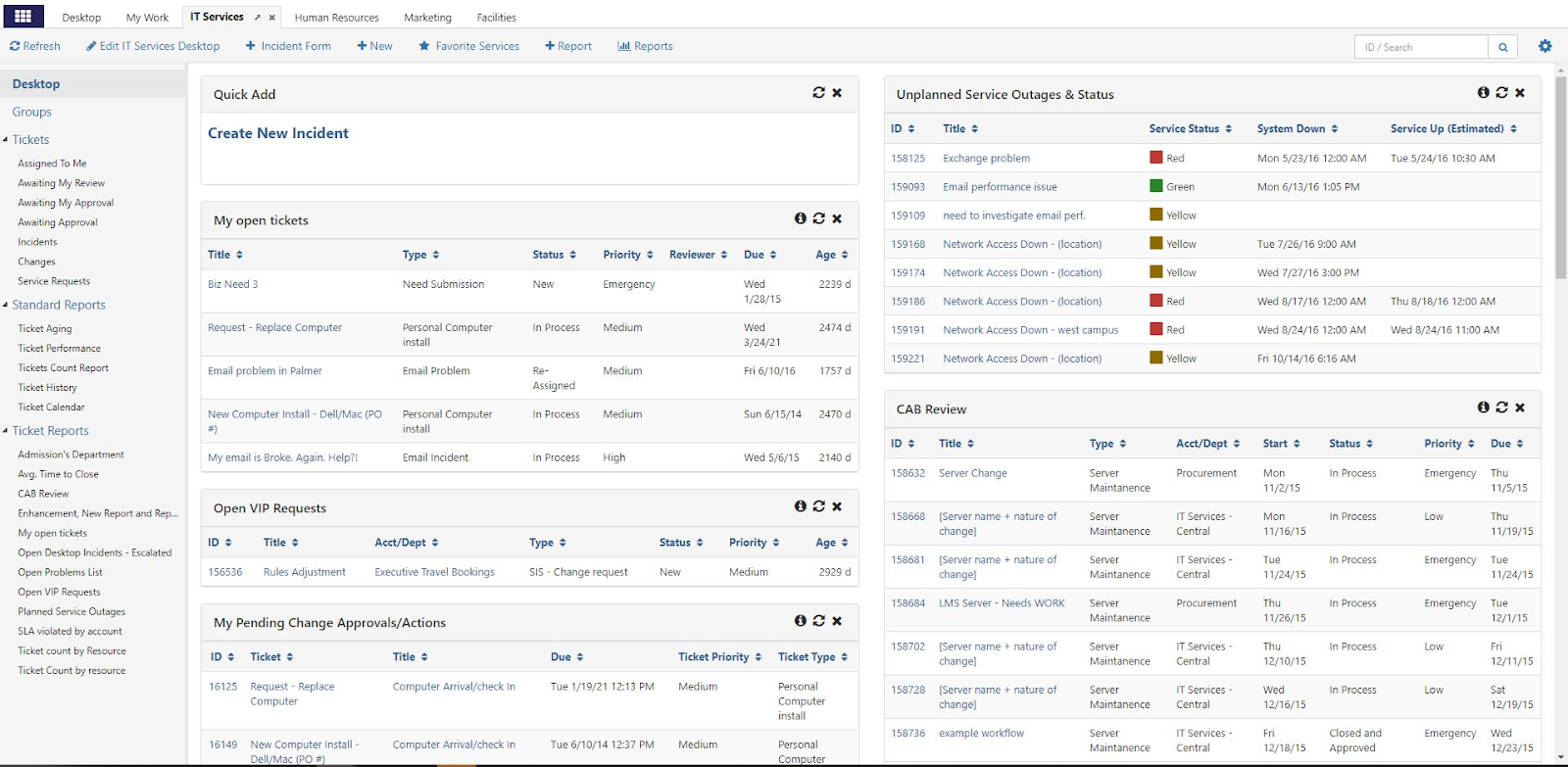
If your HR team is tired of email chains, spreadsheets, and sticky notes, TeamDynamix might be the upgrade you’ve been waiting for. It’s a full ESM platform, yes, but its most defining service is in HR workflows — you can easily manage everything from onboarding and PTO requests to policy questions and benefits tracking.
TeamDynamix’s pricing is customized and requires a demo first, although surveys show it’s 28% less expensive than average products, and 36% more expensive for enterprise brands. Still: if you need HR to scale as fast as your business does, it’ll be hard to beat an ESM as robust as TeamDynamix.
Xurrent (4me): Best ESM for AI and automations
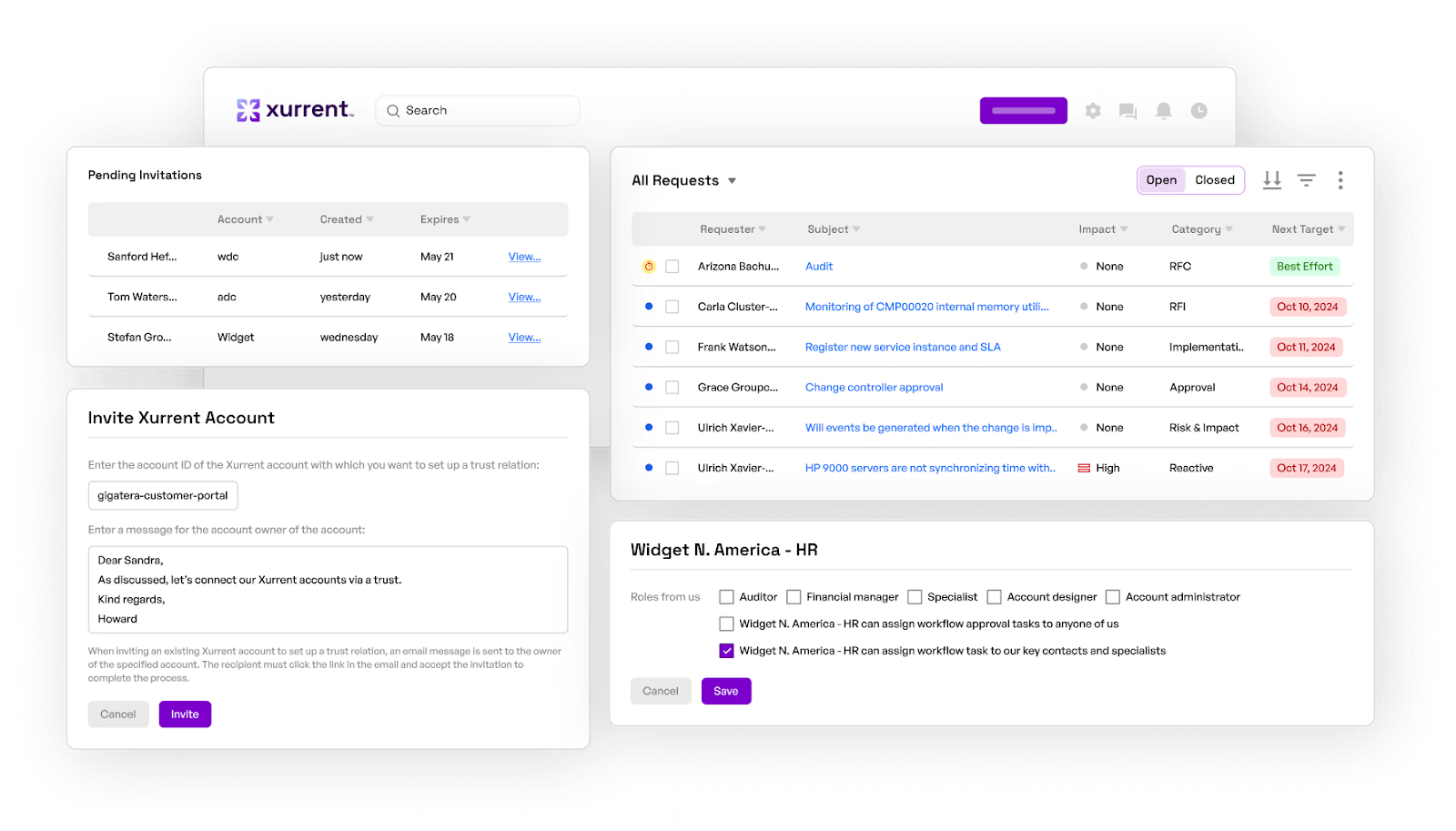
Xurrent (formerly 4me) combines ITSM, ESM, and SIAM into one platform — which is a fancy way of saying it unifies multiple service providers while automating the boring stuff.
You’ll have two options to do this: workflow automation, and AI-driven routing. With automations, for example, requests can be automatically categorized, assigned, and resolved without any manual triage. Plus, AI features can suggest next steps, detect anomalies, or surface knowledge base articles before an agent even touches the ticket.
Keep in mind Xurrent’s pricing requires a custom quote, although users suggest it’s on the enterprise side. In return, you’ll have access to a future-proof platform offering AI and automations for multiple business units.
ServiceNow: Best ESM for add-on services
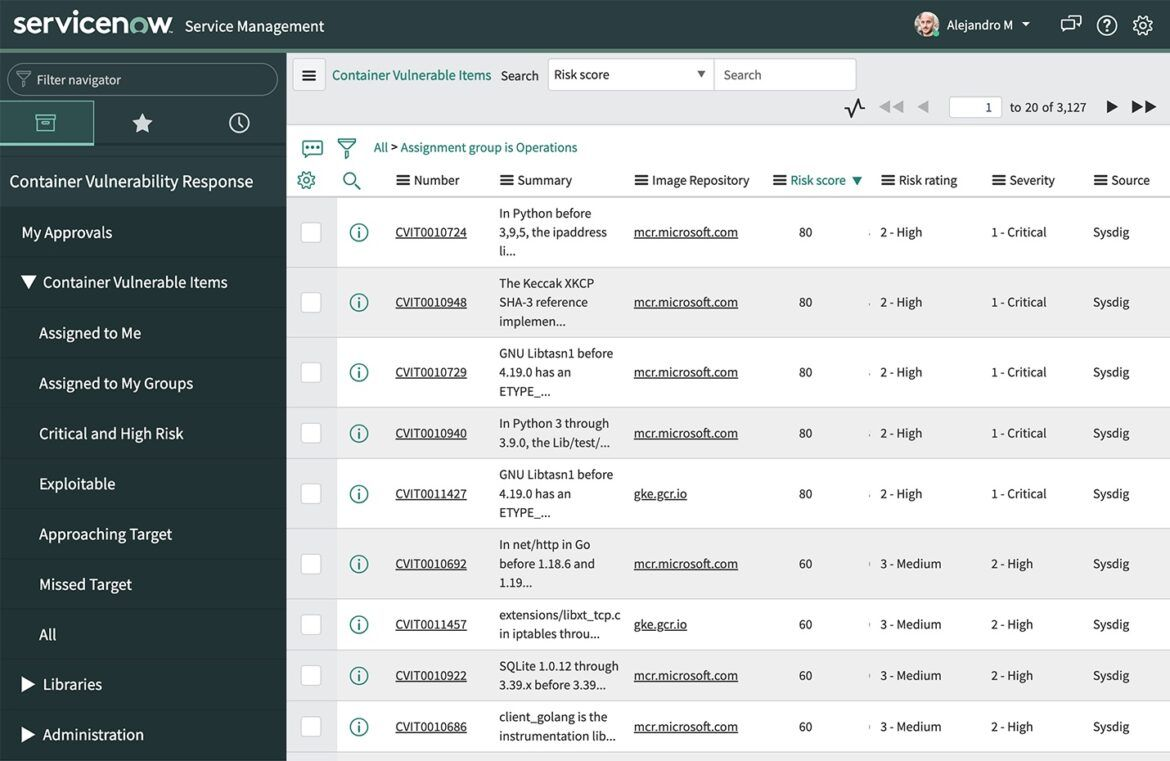
ServiceNow is the heavyweight champion of ESM platforms, and for good reason. On the surface, it’s a service desk, but look a little closer, and you’ll see there’s an ecosystem of add-on services underneath — think IT and HR to operations, procurement, and even custom-built workflows.
That said, ServiceNow isn’t exactly plug-and-play. This is an enterprise-grade solution with enterprise-grade complexity, and the enterprise pricing to match. But if you’re looking for a long-term partner that can genuinely grow with your business, ServiceNow is one of the most powerful options out there.
💡Not feeling so hot about ServiceNow’s pricing? Check out 9 Best ServiceNow Alternatives (ITSM Tools) for your business.
TOPdesk: Best ESM for customer satisfaction tracking
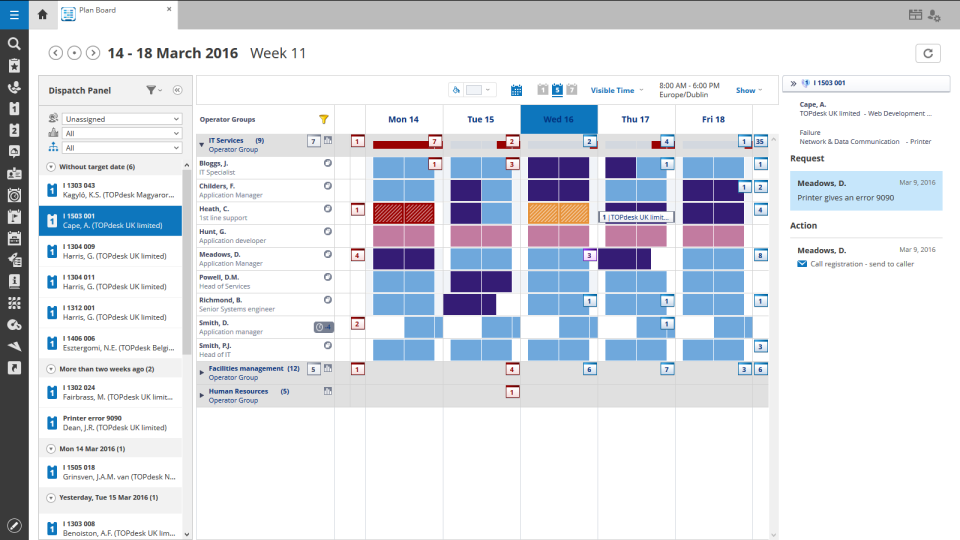
TOPdesk is a favorite among mid-sized businesses that don’t have time to learn complex software. Unlike other tools on this list, it starts as an ITSM platform, then lets you upgrade for more ESM features when you’re ready.
TOPdesk starts at $76 per agent per month for essentials like incident management, asset management, and a knowledge base. Then, when you’re ready, you can upgrade to more ESM features such as operations management (procurement), contract management (finance or legal), and even project management (for internal teams).
OTRS: Best ESM for simple office management
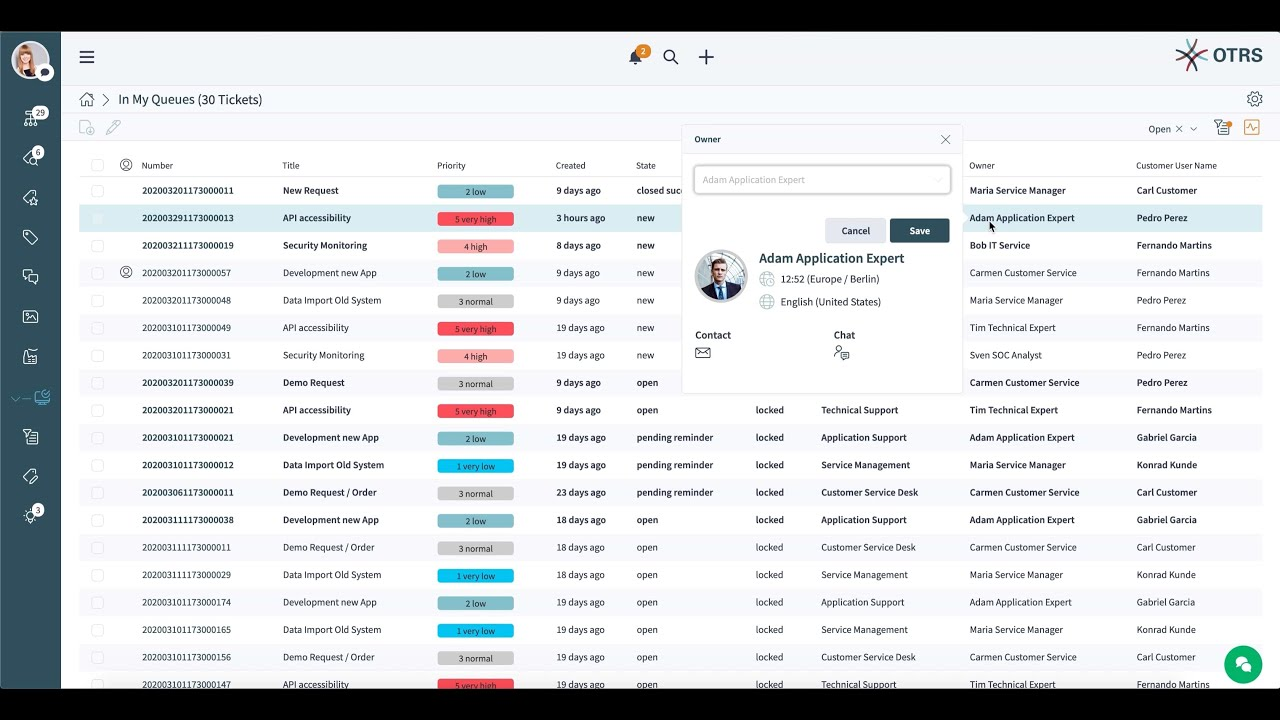
OTRS is one of the simplest ESMs for teams wanting flexible, easy-to-learn office workflows. From its humble beginnings in 2001, it’s since expanded into ESM territory with facilities management, HR requests, and features for everyday office admin tasks.
You can set up OTRS either on premise or in the cloud depending on your security needs. It also comes with pre-set dashboards and workflows, which means it’s technically ready to rumble right out of the box.
P.S., OTRS was originally launched as a ticketing system and came with a free open-source edition for community members. Official support was discontinued in December 2021, but the source code is still supported and available online.
💡Want more ESM tools to choose from? Check out our guide to the 10 Best Enterprise Service Management Platforms.
Comparing ITSM vs ESM
So ITSM and ESM are basically two different flavors of ice cream. 🍨
ESM is kinda like vanilla: it’s a base flavor you can ‘adjust’ to practically anyone and anything in your business. But ITSM is sorta like strawberry: perfect in its own right, but not necessarily for everybody.
We’ve summarized everything we’ve covered so far in the venn diagram below:
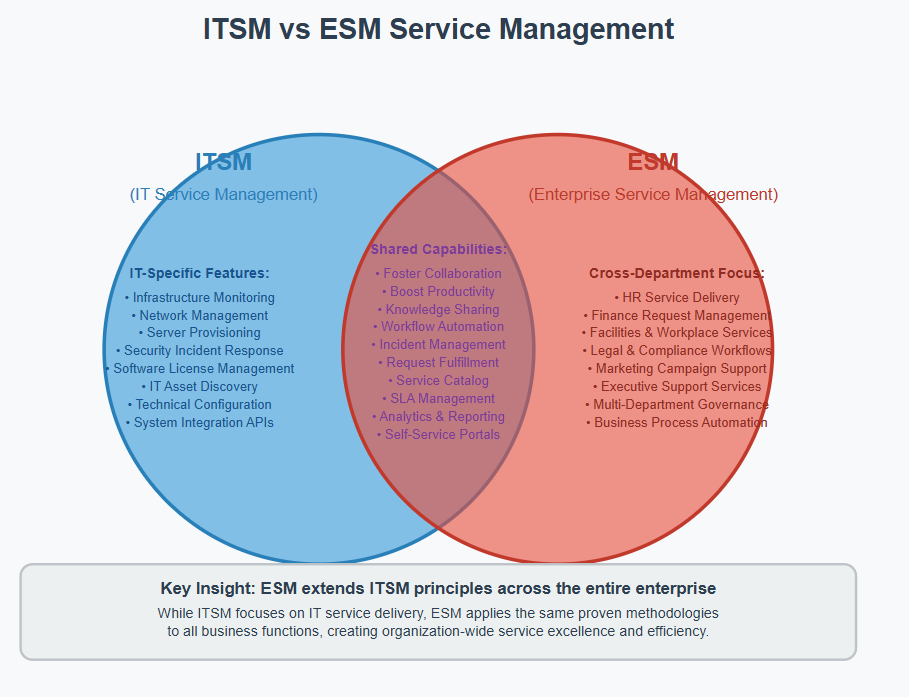
That’s all well and good, you say. But how on earth do you choose between ITSM and ESM?!
Well, both ITSM and ESM can help you foster collaboration, boost productivity, and keep everyone on your team speaking the same language (i.e., sourcing knowledge from the same place).
But if you want to focus on technical business objectives, including ITSM principles like knowledge management, service requests, and change management, go with ITSM.
If you have other departments starting a digital transformation journey, an ESM program might be better suited for the task.
Of course, no matter which option you choose, be sure it’s something you can connect to everything else in your tech stack. This includes tools like your digital signage provider.
Fugo is proud to connect with a wide variety of ITSM and ESM services so you can easily keep dashboards, services, and assignments top of mind for employees on intranets, channels, or even lobby TV screens.
Learn more about connecting Fugo with business-friendly tools like Canto’s DAM.
Frequently asked questions about ITSM vs ESM
Q: What is ITSM and ESM?
ITSM is an IT assistance platform that helps IT teams manage daily tasks like spotting issues or answering tickets.
ESM platforms are a spinoff of ITSM that are specifically designed for non-IT applications. For example, you can use ESM platforms for HR service delivery, field service management, and customer service relationship management (CRMs).
Q: Is ServiceNow an ESM?
Yes, ServiceNow is an Enterprise Service Management (ESM) platform. However, there are many ITSM platforms that can offer a suitable alternative.
You can learn more about ServiceNow alternatives here.
Q: What does ESM mean?
ESM stands for Enterprise Service Management platform, which is an extension of ITSM for departments outside of your IT team (like HR and finance). If you’ve ever used tools like ServiceNow or Jira before, you’ve already tested an ESM platform.
Q: Is ITSM outdated?
No, ITSM isn’t outdated, but the cost of using an outdated platform can be high. If you notice your system is increasingly difficult to use and keep up with, it might be time to invest in better tools.


